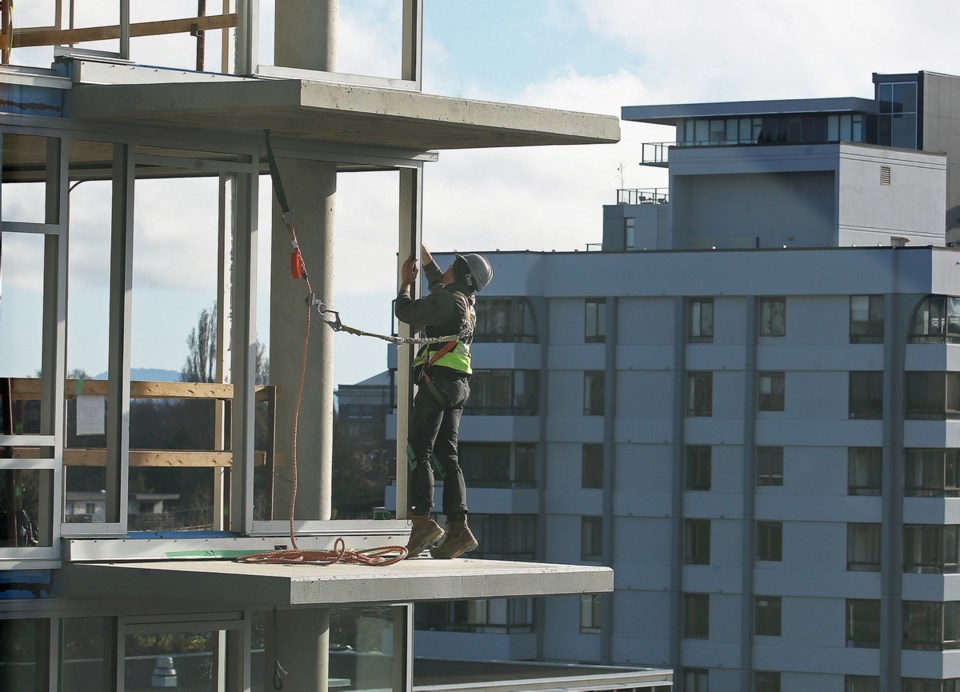The Canada Mortgage and Housing Corporation’s monthly housing starts data shows the overall pace of homebuilding in the capital region is ahead of the pace set in 2018, but a drop-off in single-family home construction is alarming, says one analyst.
Through the first quarter of 2019, builders in the region have started 749 homes, up from the 715 started through the first quarter of 2018. The number is boosted by multi-family units — 526 through the first three months of this year versus 493 in 2018.
At the same time, the number of single-family homes started is 122 this year versus 155 in 2018.
“The single-family home is the canary in the coal mine,” said Casey Edge, executive director of the Victoria Residential Homebuilder’s Association.
“We are slightly ahead of last year’s pace, but if you look closely there are declines in some of the municipalities.”
The single-family home engines of Langford and Saanich have both seen declines in 2019. Langford has 30 house starts this year, down from 48 by the end of March last year. Saanich has dropped to 11 from 17.
Edge said the declines were to be expected after two years of near-record building.
“The multi-family projects have been in the pipeline for a couple of years and are just now coming to fruition, but the single-family numbers are a better indication of current economic conditions,” he said.
In March, there were 177 total starts, 126 of which were multi-family units, while in March 2018 there were 304, 254 of which were multi-family units.
“Housing starts declined in the [region] to the end of March, a sign that new construction has slowed,” said Braden Batch, CMHC senior market analyst. “Saanich condos were the most active form of new units for March as demand for affordable home ownership remains strong in Victoria.”
Edge said that demand is not being met. He pointed out that while the population of the region has grown by 10.9 per cent since 2011, the number of housing units has not kept pace, with inventory increasing by 9.8 per cent.
“We’ve had a record number of starts over the past two years that has boosted housing. This supply has not resulted in lower prices because we’ve been playing catch-up and we’re barely keeping pace with population growth,” he said. “At a bare minimum, housing has got to keep up with population growth.”
Across Canada, the pace of housing starts picked up in March after a sharp slowdown in February.
The national housing agency said the seasonally adjusted annual rate of housing starts climbed to 192,527 units in March, versus 166,290 units in February. Economists on average had expected an annual pace of 196,500, according to Thomson Reuters Eikon.
“There’s no doubt the Canadian housing market has slowed in the past year, but the latest data on construction suggests the downward trend is stabilizing,” said Sal Guatieri, senior economist at BMO Capital Markets. “We still see starts hovering around, or even just above, 200,000 this year, marking a small step back from last year.”



